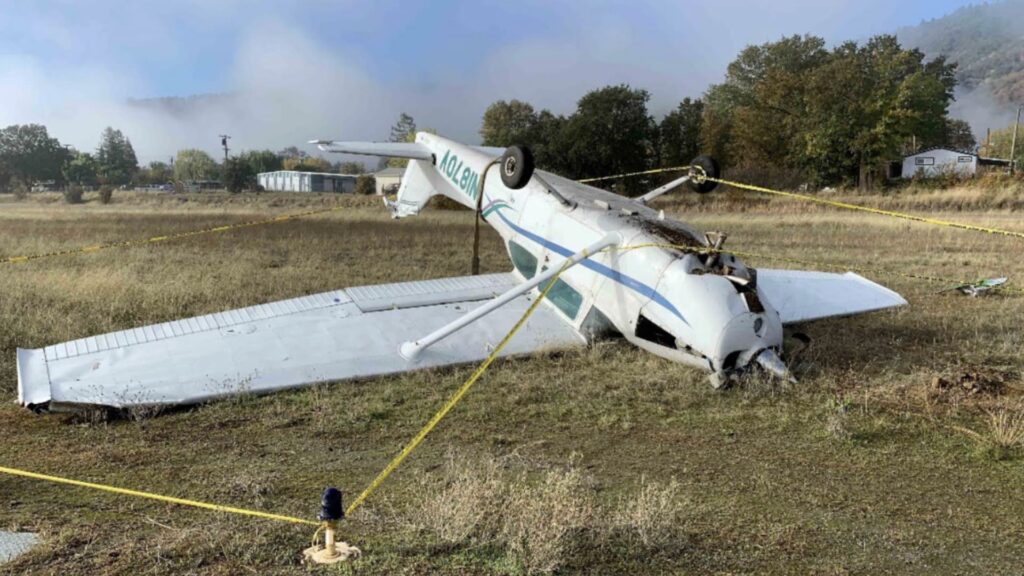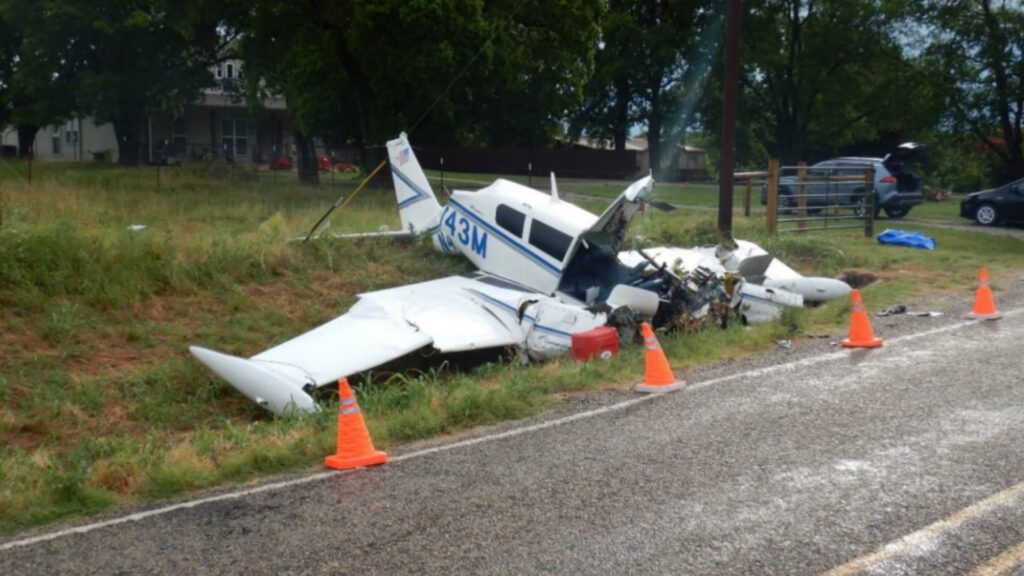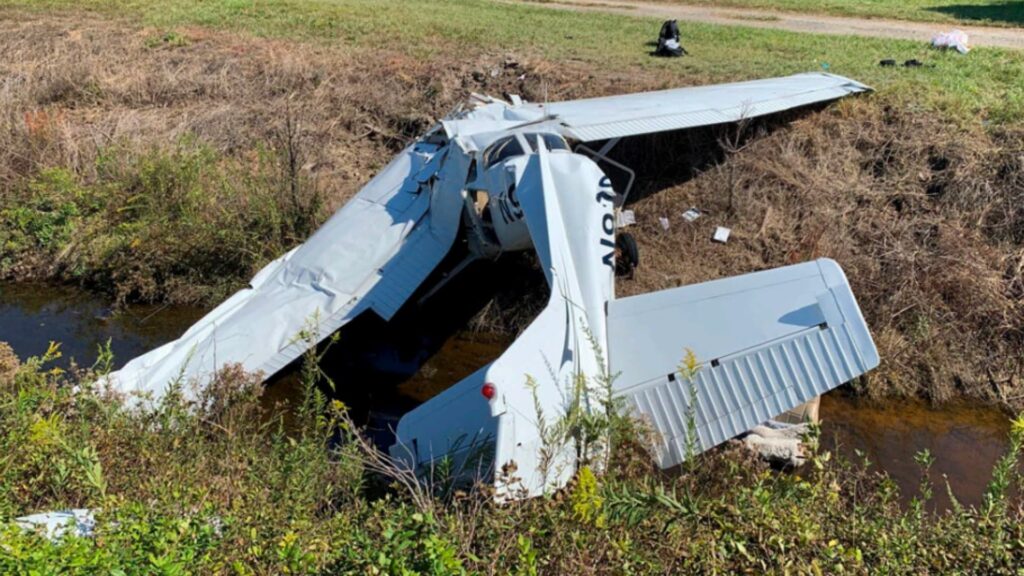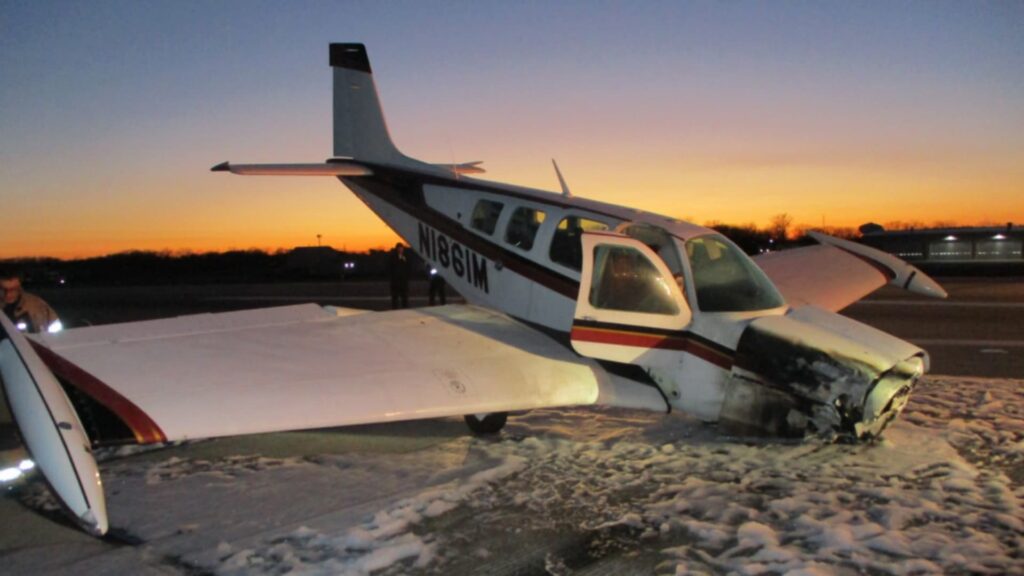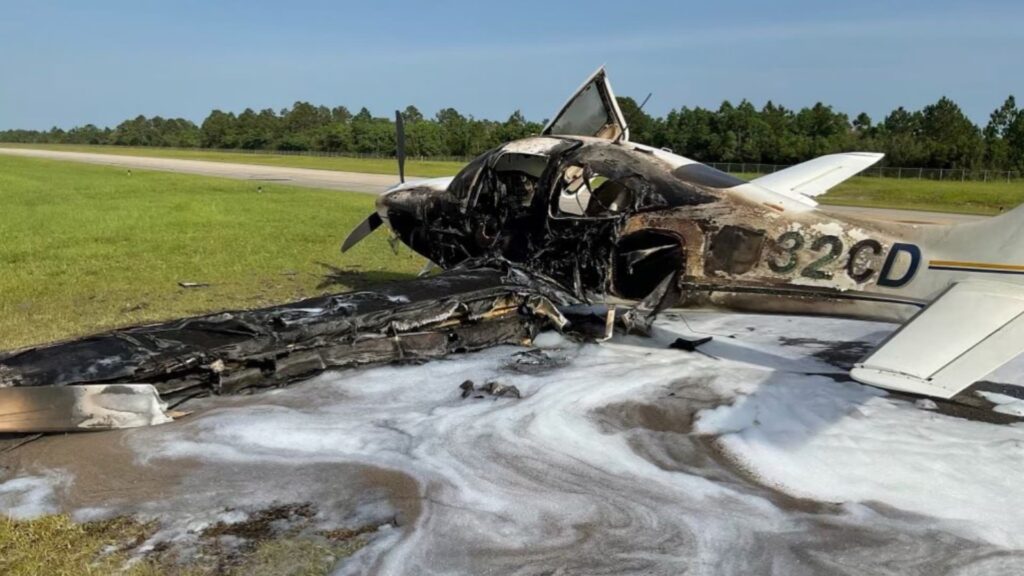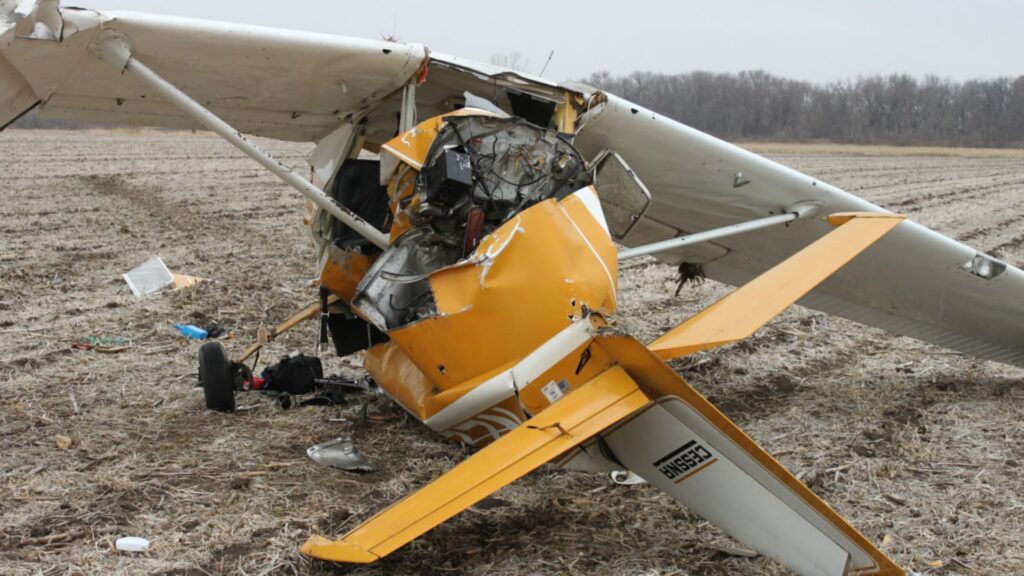The setup on this one was straightforward. A 43-year-old student pilot launched on his second solo cross-country in a Cessna 172M, N1870V, from Napa to Ukiah on a clear October afternoon. Total flight time was 31.3 hours—every hour in the Cessna 172—with 8.8 hours logged as PIC. He held a student pilot certificate and a current third-class medical. The plan was a full-stop landing at Ukiah, nothing exotic. Weather cooperated, traffic was moderate, and the airplane looked and sounded healthy on camera.
A Camera, a Checklist, and a Bird
The pilot had a GoPro tied into the intercom. Early in the flight he ran the before-takeoff checklist, including a confirmation that seatbelts were buckled, and then settled into cruise. Near Ukiah he switched the camera back on and slotted into a pattern with a few other aircraft. On downwind, he started the before-landing checklist and, right then, a bird flashed close by and broke his cadence. The recording did not capture him completing the “seatbelts—secure” item after that interruption. He continued, turned base to final, called “flaps in, carb heat out, lights on, seventy,” and the approach looked normal.
The Go-Around That Didn’t Climb
Passing the numbers, the airplane floated. The pilot keyed the mic and announced the go-around. Initially, everything tracked: power came in, pitch and climb followed. But about five seconds later the stroboscopic blur of the prop changed on video—usually the first hint of a power fluctuation—followed by a slight pitch-down. The pilot said, “whoa, whoa, whoa,” and the recording ended. Security footage from midfield filled in the rest: the 172 leveled about 50–60 feet AGL, then pitched down, hit nose-first on the centerline hard enough to separate the nosewheel, and skated another 700 feet under power before nosing over into the grass and coming to rest inverted. The engine could be heard running through the sequence and even after the first ground strike.
If you freeze the composite image of the flight path on page 5 (Figure 1), you can visualize that shallow climb and abrupt pitch-over. The ground evidence on page 8 (Figure 2) tells the same story: a nose-wheel gouge, a long prop-slash train, and a wreckage path drifting right as the airplane slid.
Why Power Flickered When It Mattered Most
Here’s the critical systems piece. In the week before the accident, Northern California took a soaking—the airplane lived outside during those storms. After the accident, investigators drained the system and found water: about an ounce in the gascolator and several ounces in the left tank. The left tank itself had a menu of problems: a longstanding leak at the filler neck adapter, worn support pads that let structure fret the tank, and a buckle in the lower tank skin. That deformation created a trap that could hold water away from the normal drain port. Even diligent sumping might not have pulled that water out.
The working theory matched the timeline. During maneuvering in the pattern and the transition to a go-around, trapped water sloshed and briefly reached the fuel pickup—just enough to interrupt power. The engine never fully quit; it sagged. The pilot likely recognized the sink and tried to salvage a landing with runway still ahead. The outcome, with a prop-slash signature and the engine audible at roughly 2,100+ rpm after the first impact, pointed to partial power and a hard, nose-low touchdown rather than a stall-break departure.
Seatbelts: The Quiet Divider Between Injury and Fatal
Cabin damage was surprisingly light for an inverted 172. The heartbreak was restraint use. The left-seat three-point harness was intact and functioned in testing, but it was found unlatched and fully extended. The pilot was partially ejected through the upper windshield area and likely incapacitated on that first impact, which would also explain why the engine kept running for a while with no further control inputs. Everyone who knew him described him as a seatbelt hawk. The GoPro audio earlier in the day captured him verifying belts before takeoff. So why unlatched later? One plausible thread in the report: he had dropped a pen and a pencil earlier and talked about it on the recording. It’s possible he popped the belt to retrieve something and simply never re-secured it, especially after the bird distraction upset the flow. The instructor’s standard GUMPS included “Seatbelts—secure,” but the bird close pass and a busy pattern may have kept that last verification from happening.
Maintenance, Mods, and Missed Opportunities
There were other maintenance warts noted—seat rails beyond limits, a sticky friction lock, worn ignition leads, and cam lobe wear with metal in the screen. None of that explained a sudden, intermittent power sag; that kind of cam wear is slow-burn degradation, not an on-off switch. What might have changed the day was a Cessna service bulletin (SEB 92-26) calling for additional fuel tank drains to better detect and remove water. Part 91 operators don’t have to comply with service bulletins, and this airplane hadn’t incorporated the extra drains. Given the later discovery of pooled water in the left tank and the tank’s damaged geometry, those added drains could have exposed the contamination before flight. The fueling source checked out, and other aircraft on the same truck reported no issues. The contamination pointed inward—to the tank and the week of rain.
Performance Thread: A Recoverable Energy Picture
The performance study put some numbers on what we’re seeing. Groundspeed and altitude changes suggested the airplane accelerated through the low climb, then began a roughly 1,350 fpm descent with about 2,000 feet of runway remaining, striking the surface at about 77 knots. That’s a lot of kinetic energy to manage in a flat, runway-aligned slide—hence the long prop-slash signature and the eventual nose-over in the grass. The flaps were found retracted, carb heat off—consistent with a go-around that had been initiated—so configuration probably wasn’t the limiting factor. The limiter was the combination of partial power and a pitch-down close to the ground.
What We Can Learn
First, water is a shape-shifter. You can sump, see clean blue avgas, and still have trouble if tank geometry traps water above or away from the drains. After heavy rain, assume you’re on a scavenger hunt. Rock the wings, let fuel settle, sump again—then again. If your make/model has a service bulletin for additional drains, have a real conversation with your owner, club, or school about installing them. It’s cheap insurance when the airplane lives outdoors.
Second, fly the flow, finish the flow. The bird strike scare wasn’t an actual strike, but it took the pilot off script at the exact moment he was supposed to confirm belts. This is where a tactile “belts-touch-tug-talk” habit helps; don’t just say the word, pull the buckle. In training airplanes, I like a second “belts” call on short final or at the go-around decision point. It sounds redundant until it isn’t.
Third, treat a go-around power sag like any other low-altitude engine anomaly: lower the nose, use the runway you have, and commit early to a straight-ahead landing if climb performance isn’t there. The video suggests that’s what the pilot attempted—abort the go-around and land—but the nose came down too hard, likely with the throttle still forward and the airplane still flying. With belts latched, that sudden deceleration would likely have been survivable.
Human Factors Matter
Nothing here read like complacency. The student was engaged, talking through checklists, cross-checking traffic, and even photographing a clean fuel sample. He requested a top-off before departure and sumped the tanks. He sounded like a conscientious, motivated trainee who had a busy pattern, a bird distraction, and an airplane that hid its water exceptionally well. This is why we practice discipline in the small things and leave margins where we can—because sometimes we do everything mostly right and still get handed a curveball.
NTSB’s Bottom Line
Probable cause was a power interruption from water-contaminated fuel, leading the student pilot to abort the takeoff/landing and touch down hard. Contributing factors were the leaking and damaged left fuel tank that allowed water ingress and prevented proper drainage during preflight. The seatbelt being unlatched turned a survivable sequence into a fatal one. It’s a stark reminder that our best outs are built long before the flare—by maintenance decisions, by how we sump on rainy weeks, and by habits that ensure the belt is actually locked, every time.
Action Items for the Rest of Us
If you fly or manage older Cessna singles, audit your tanks after serious rain, especially if the airplane lives outside. Consider installing the additional wing drains from SEB 92-26. Build a belt-verification habit that survives distractions. Practice low-altitude engine-anomaly responses at a safe height, and brief yourself before every approach: if power sags on go-around, pitch for landing, stay aligned, and use the runway.

